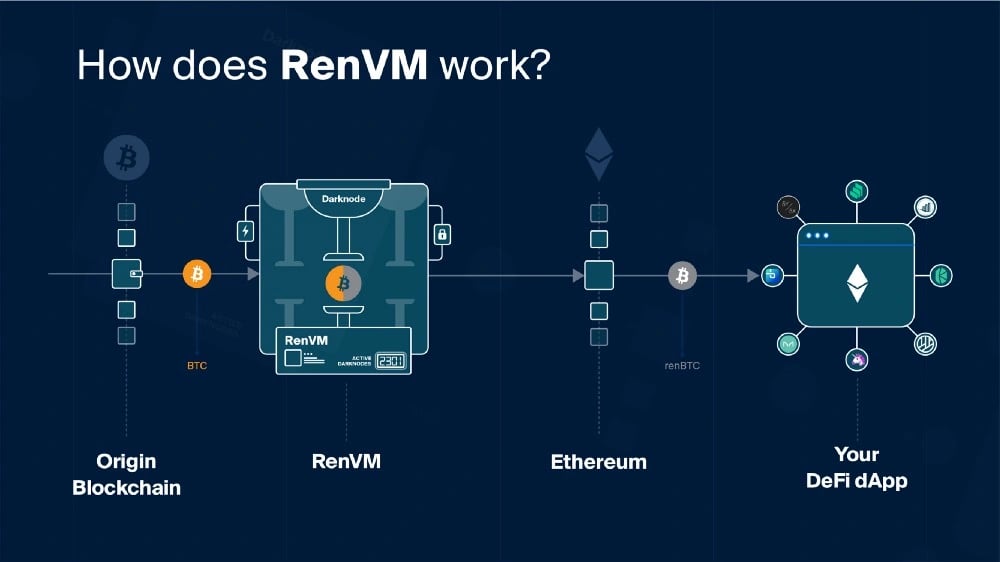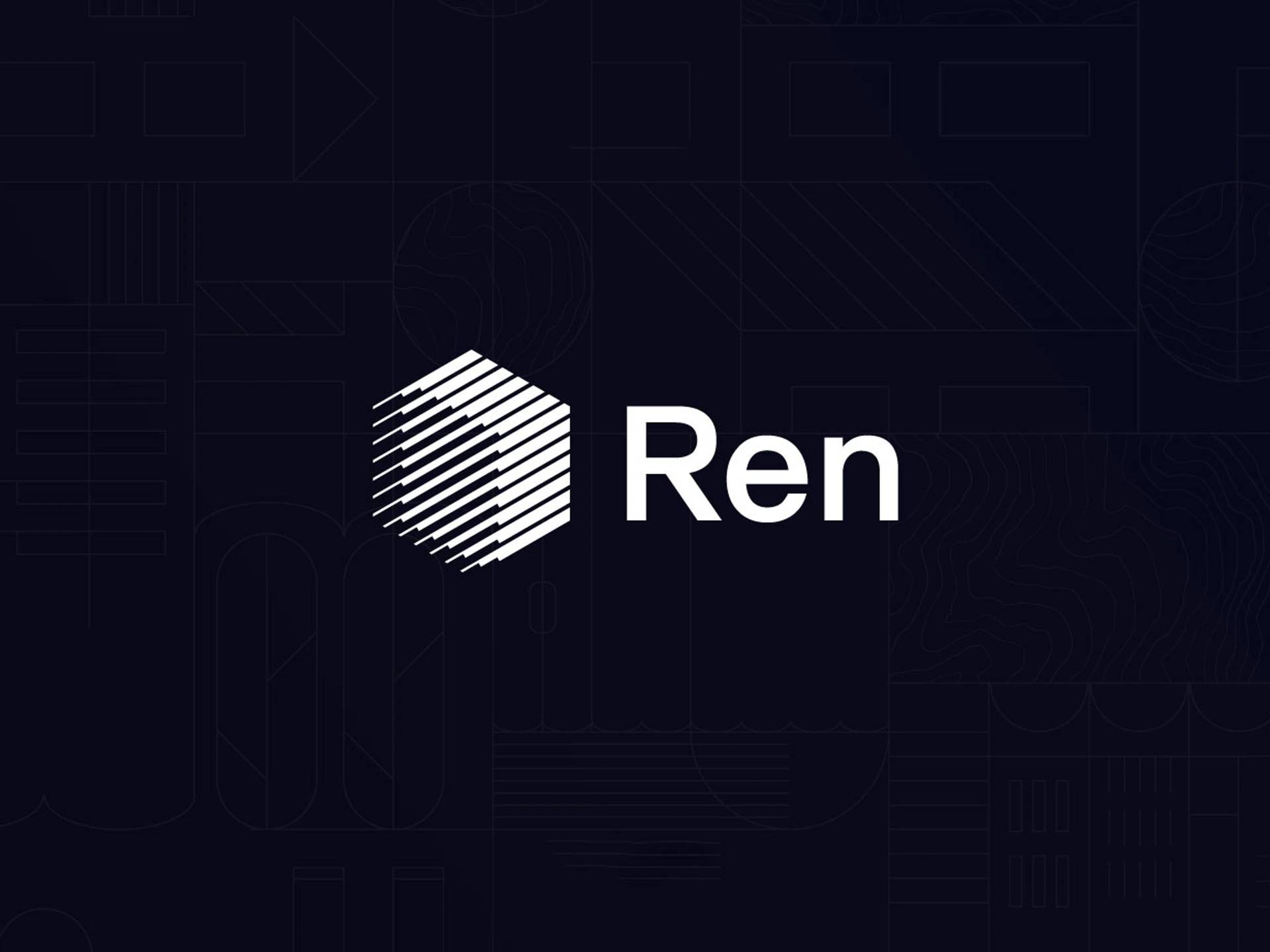Ren
Ren, previously called Republic Protocol, is a protocol that facilitates the transfer of various crypto assets to the Ethereum blockchain, enabling users to access decentralized finance (DeFi) products without the need to sell their assets. With the ability to move crypto assets across different blockchains, users can lock their assets in a smart contract and receive ERC-20 tokens in exchange. Ren's native cryptocurrency, REN, is utilized to cover operations on the Ren network. The primary offering of Ren is RenVM, which enables the interoperable and private transfer of value between different blockchains through the use of secure multi-party computation. [1][2]
Overview
The primary function of Ren is to act as a custodian for digital assets while they move between different blockchains. When a user transfers BTC to RenVM, it holds the BTC and creates an ERC-20 token called renBTC on the Ethereum blockchain in a 1:1 ratio. This ensures that the value of renBTC is always equivalent to the value of BTC. This mechanism can be applied to almost any digital asset and smart contract platform, including native tokens such as Dogecoin and the Polkadot blockchain. [3]
Ren enables interoperability and eliminates barriers by functioning as a "universal translator" or adapter. It accomplishes this by converting the native format of a blockchain to the format required by the destination chain. [3]
RenVM
RenVM utilizes secure multi-party computation (sMPC), a cryptography subfield that enables nodes to jointly compute a function over their inputs while maintaining input privacy. By implementing sMPC, RenVM ensures that inputs remain hidden from all parties, including the nodes that power them. To achieve this, RenVM splits private key pieces within each node, ensuring that the nodes themselves are not aware of which pieces they possess. [3]

Through its ability to manage private keys on multiple blockchains, RenVM enables the transfer of cryptocurrencies across these blockchains. As a network of nodes, RenVM functions as an autonomous agent that securely manages ECDSA private keys on different blockchains, thereby allowing for the decentralized and permissionless movement of digital assets between them. Technically, RenVM is a byzantine fault-tolerant protocol that leverages sMPC to execute ECDSA threshold key generation and signing. [3]
Ren 2.0
Ren 2.0 centers around decentralization and security enhancements, including support for generic application logic on top of Ren, an enhanced MPC algorithm that can handle a wider range of signing schemes and is more scalable, and optimized tokenomics that incentivize ecosystem participants.

Tokenomics
REN is a cryptocurrency with a fixed supply cap of 1 billion tokens, 60.2% of which was sold to investors during a presale and public token sale in 2018. Ren also has a reserve fund of 19.9% of the total supply, while 9.9% was allocated to advisors, the team and founders, with a two-year lock-up period for team tokens and six-month lock-up for advisor allocations. Additionally, 10% of the REN supply is allocated for activities such as partnerships and development. REN is an ERC-20 standard token. [4]
Founders
Ren was established in 2017 by its CEO, Taiyang Zhang and Loona Wang. Originally known as Republic Protocol, Ren was unveiled to the public in January 2018, with Zhang citing its primary use case as a "decentralized dark pool." Zhang also co-founded the crypto hedge fund Virgil Capital. [4]
Prior to that, Zhang co-founded Neucode, a software and web development startup, in 2014. Jaz Gulati, who co-founded Neucode with Zhang, currently works as a software developer for Ren. [4]

